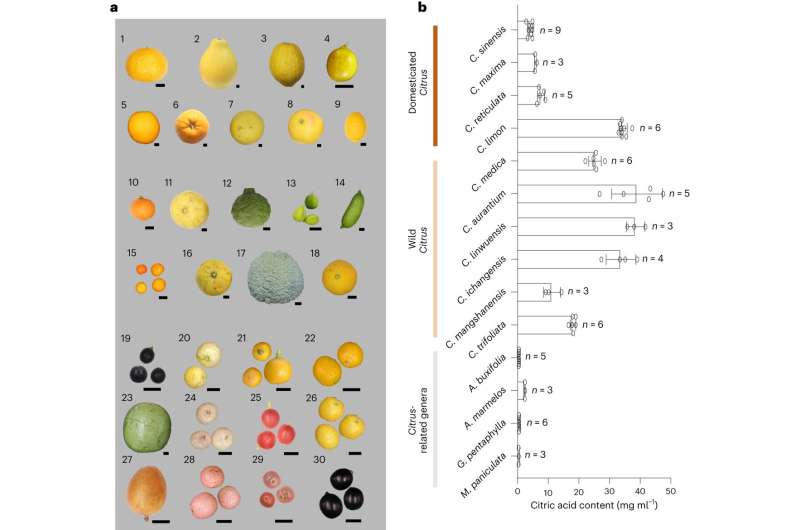October 3, 2023 report
This article has been reviewed according to Science X's editorial process and policies. Editors have highlighted the following attributes while ensuring the content's credibility:
fact-checked
peer-reviewed publication
trusted source
proofread
Genetic study of citrus fruits suggests they originated in southern China

A team of horticulturists, genealogists and germplasm specialists affiliated with multiple institutions in China, working with two colleagues from the U.S. and one from Australia, has found evidence that suggests citrus fruits originated in what is now southern China. In their study, reported in the journal Nature Genetics, the group built a family tree of citrus fruits using a variety of techniques.
Citrus fruits tend to grow in warm or tropical climates and come in many varieties, many of which are human cultivated. But up until now, it has not been clear where citrus fruits first appeared. Some had suggested they might have originated in certain parts of Australia, the foothills of the Himalayas, or southern areas in China. In this new effort, the researchers sought to find a more conclusive answer.
The researchers conducted a genetic study of 314 citrus or citrus-related plants. They also conducted fieldwork, venturing to places where citrus plants were thought to exist but were unverified—this allowed them to find and classify a large number of wild species. The team then used data from all of their combined sources to create a family tree for citrus fruits. They found that the species C. trifoliata was the oldest, at approximately 8 million years old—today, it grows in southern parts of China. That suggested that southern China is the birthplace of citrus fruit.
The researchers suggest that citrus fruit species growing in China could have made their way to what is now India when the Asian tectonic plate collided with the Indian tectonic plate approximately 25 million years ago. From there, they could have spread all the way to lands surrounding the Mediterranean Sea.
As part of their work, the research team also found the gene responsible for controlling the amount of citric acid produced by a given fruit—PH4. They found that when activated, it fires up a proton pump that promotes the production of citric acid, and by extension, the degree of tartness.
More information: Yue Huang et al, Pangenome analysis provides insight into the evolution of the orange subfamily and a key gene for citric acid accumulation in citrus fruits, Nature Genetics (2023). DOI: 10.1038/s41588-023-01516-6
Journal information: Nature Genetics
© 2023 Science X Network



















